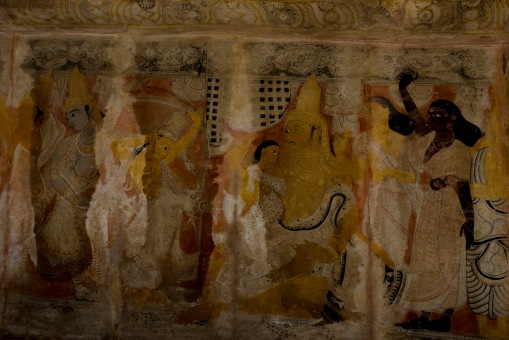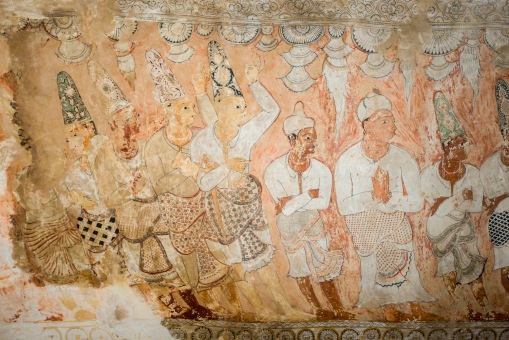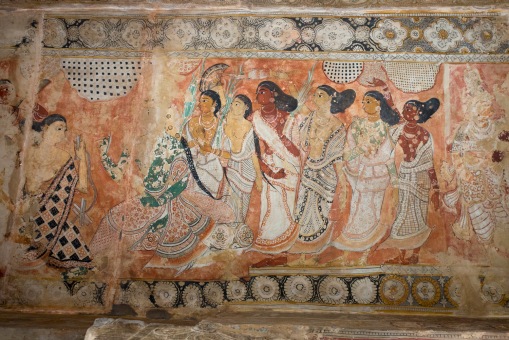n Hindu Mythology Shivalinga and Nandi are inseparable. Wherever
there is a temple dedicated to Lord Shiva, an idol of Nandi is sure to
be found inside the temple complex.Nandi at Lepakshi is a bit different
in the way that it is outside the temple enclosure, say about five
hundred meter away on the road side. But then so is the big majestic
Shivalinga in the temple. Infact the main deity of this temple is
Veerbhadreshwara, a form of Lord Shiva only and the very artistically
carved Nagalinga is in the open courtyard of the temple outside the
sanctum. The Nandi faces this Shivalinga.May be during the time both
these were sculpted there were no high buildings in that five hundred
meter stretch and Nandi even from that distance was able to continuously
gaze his beloved lord and master.
This splendid Nandi bull is of gigantic dimension, approximately 4.5 meter high and about 8 meter long.This monolithic bull is a spectacular example of prodigiously talented artists of the Vijayanagar empire period.The massive Nandi bull like a guard presides over the entrance of Lepakshi town.
The exquisitely carved details of ropes, belts and bells over the body of Nandi are one of the finest example of stone craftsmanship.

For ages it sits elegantly under the open sky rapt in the bhakti of the supreme Lord.
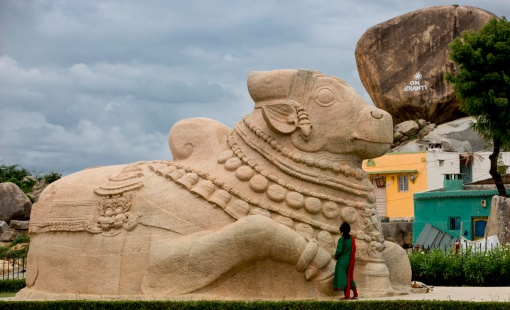
Look at those intrinsically carved details of all the ornaments…and the expression of Nandi Maharaj…I can almost see a delicate smile lingering on His face. Are you able to make out the mythical bird with an elephant in it’s claw, hanging as a locket from the chain? Well, it is said to be an insignia of Vijayanagar kings.
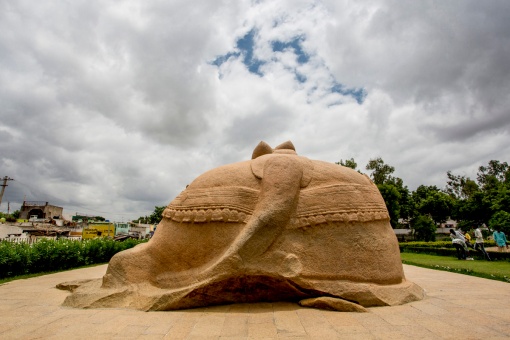
Like me do you too find a Ganesha reflected here?

The green lawns. shady trees and rocks here and there… a perfect setting to set you on pondering mode about our rich cultural heritage…the bygone times….almost tempting you to jump into a time machine and live that era for some time.

The lotus ponds and the rocky terrain stretched around makes it a perfect spot to spend leisurely time.
Nearby this spot is Andhra Government guest house with fooding and lodging facilities.
All the pictures by Sunder Iyer.
This splendid Nandi bull is of gigantic dimension, approximately 4.5 meter high and about 8 meter long.This monolithic bull is a spectacular example of prodigiously talented artists of the Vijayanagar empire period.The massive Nandi bull like a guard presides over the entrance of Lepakshi town.
The exquisitely carved details of ropes, belts and bells over the body of Nandi are one of the finest example of stone craftsmanship.

For ages it sits elegantly under the open sky rapt in the bhakti of the supreme Lord.

Look at those intrinsically carved details of all the ornaments…and the expression of Nandi Maharaj…I can almost see a delicate smile lingering on His face. Are you able to make out the mythical bird with an elephant in it’s claw, hanging as a locket from the chain? Well, it is said to be an insignia of Vijayanagar kings.

Like me do you too find a Ganesha reflected here?

The green lawns. shady trees and rocks here and there… a perfect setting to set you on pondering mode about our rich cultural heritage…the bygone times….almost tempting you to jump into a time machine and live that era for some time.

The lotus ponds and the rocky terrain stretched around makes it a perfect spot to spend leisurely time.
Nearby this spot is Andhra Government guest house with fooding and lodging facilities.
All the pictures by Sunder Iyer.

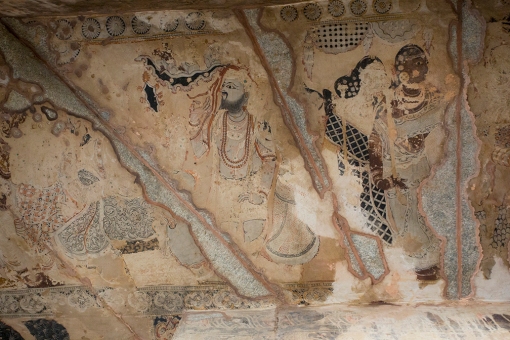
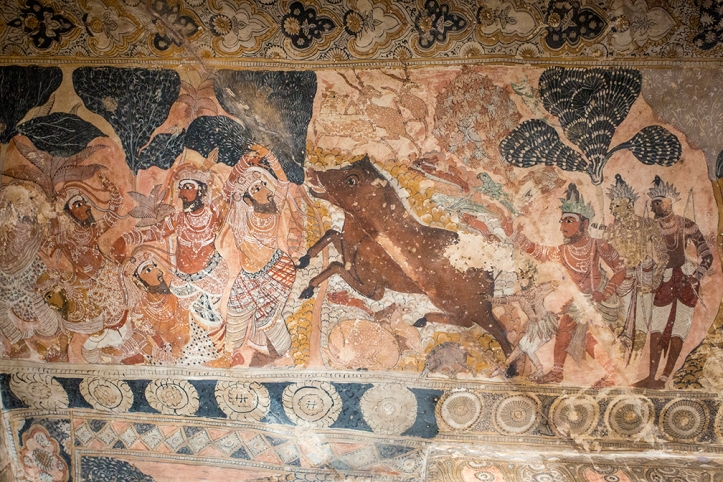
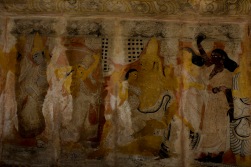
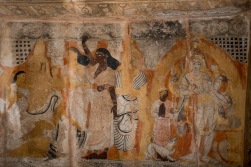
 Draupadi swayamvara
Draupadi swayamvara